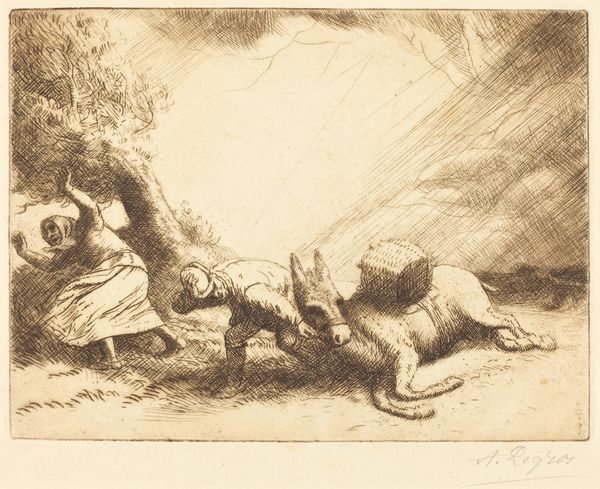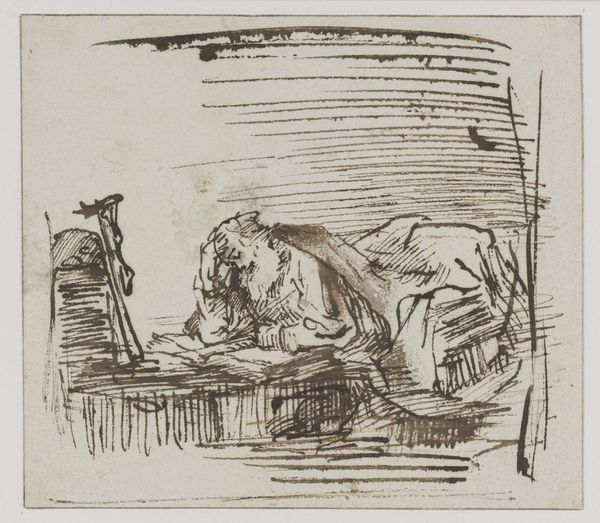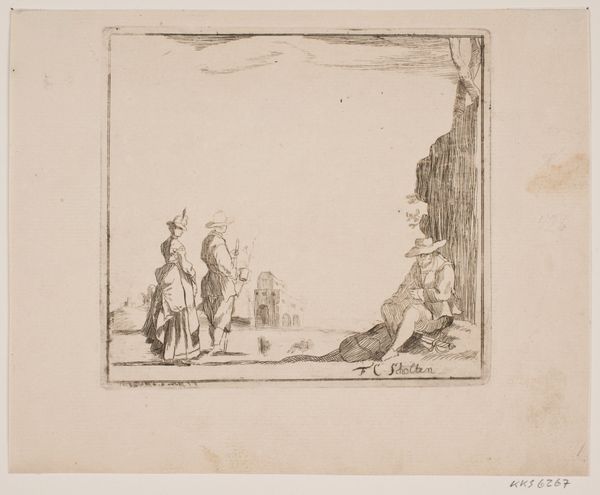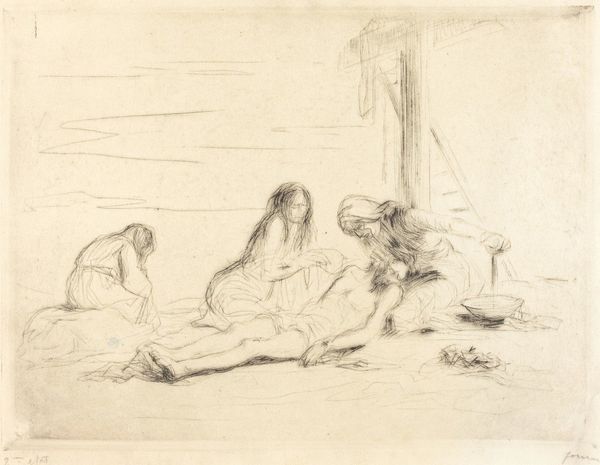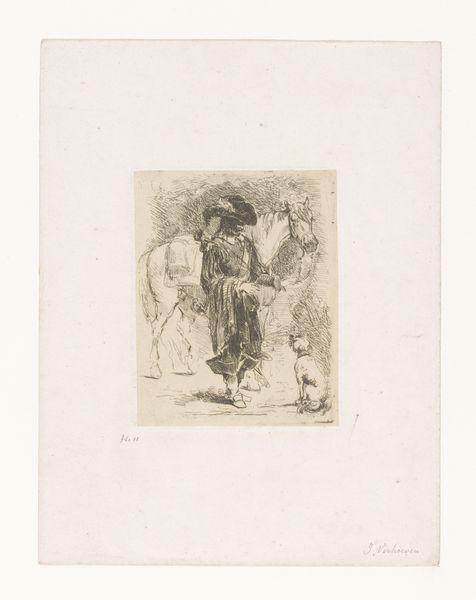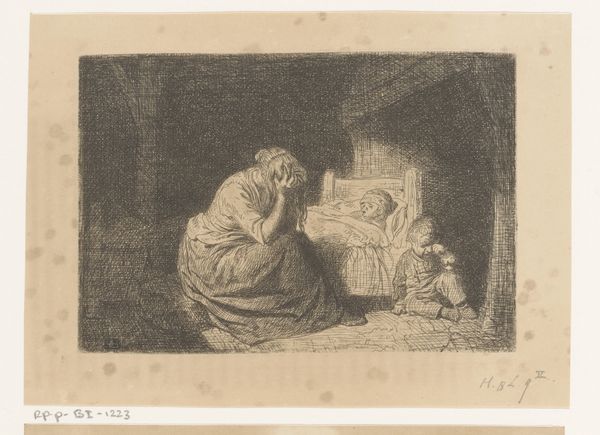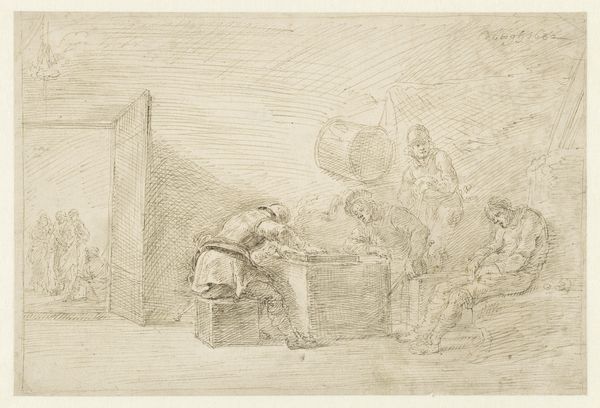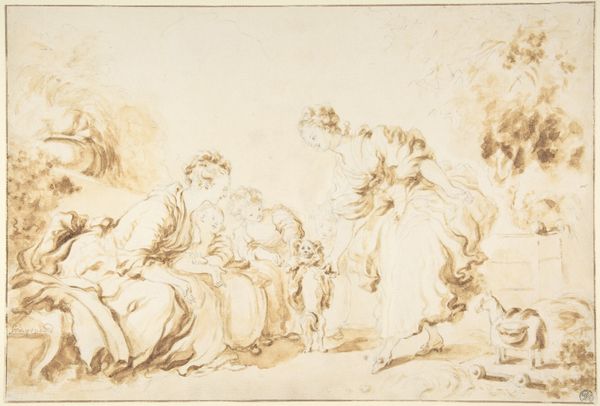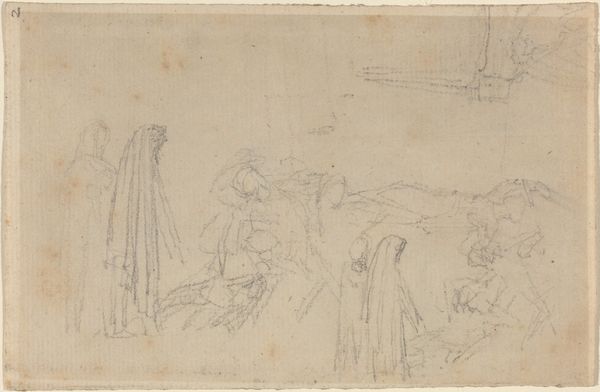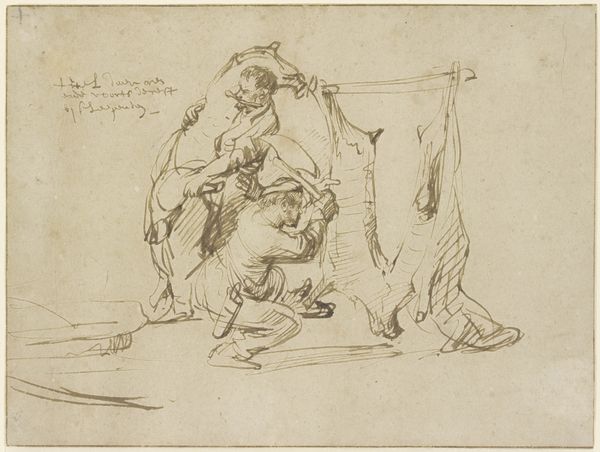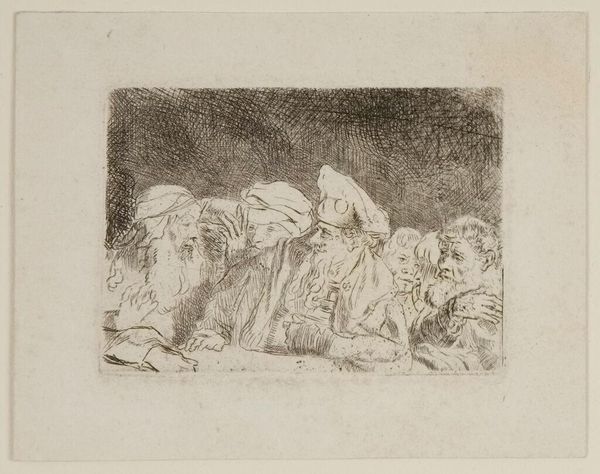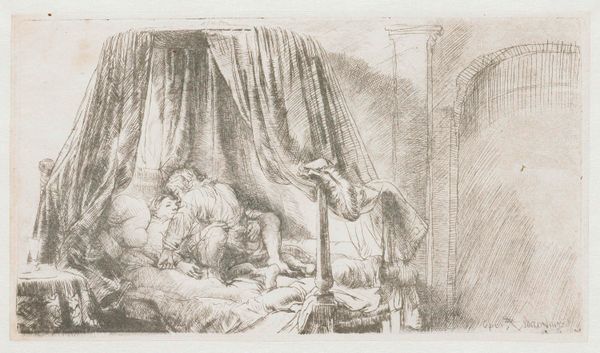
Dimensions: Sheet: 7 5/16 x 10 1/16 in. (18.6 x 25.6 cm)
Copyright: Public Domain
Curator: Antonio Canova’s 1785 pencil sketch, “Study for a Tomb,” has always struck me with a strange, somber resonance. What's your initial take? Editor: Well, it’s heavy, isn't it? Just look at those slumped figures. They're swallowed by grief; even the light feels like it's mourning. You sense a real absence in the drawing, even without knowing its title. Curator: Absolutely. Canova captures that crushing weight of loss so profoundly with the stark simplicity of pencil on paper. It’s a Neoclassical piece, and while that period is known for its heroic narratives and sharp clarity, here, we have an intimate, quiet contemplation of mortality. It almost feels as if he understood that profound absence firsthand. The Neoclassical figures feel less romanticized, don't they? More… authentic in their grief? Editor: Indeed, while Neo-classicism often looked to antiquity for stoic ideals, this drawing hints at something far more disruptive: the acknowledgement of female grief, the tenderness of two women comforting one another...it gestures towards a more complex interior life. And Canova places this interaction right in the middle, daring the audience not to recognize and perhaps even identify with them. Is he asking us whose absence we are reminded of here? Curator: It does make me reflect on who or what Canova was grieving. It's compelling to think about the personal undercurrent beneath the historical and stylistic context. Was there someone he lost that inspired such heartfelt representation? Also, observe the shroud draped on what seems to be a tomb; its deliberate placement leads the viewers from the right to the left in an emotional crescendo that culminates in the representation of mourning, which feels highly performative at the same time… Do you get a sense that there’s something almost too staged about this grief? Editor: Performative...perhaps, although I prefer to call it “ritualized.” Think about the ways grief was constructed at the time, particularly for women of a certain social standing: intense outward expressions were encouraged as a means of demonstrating respect and remembrance. Even the landscape reads almost theatrical in its arrangement: stage left, mourning. Stage right, a shroud on a...mausoleum. Even the Cupid could be interpreted as an ironic comment about earthly, romantic love. I do think it manages to say something radical. Curator: And, maybe it is Canova challenging societal expectations of mourning by depicting such genuine anguish. Editor: Exactly. Thank you for putting that so eloquently. Curator: Likewise, I believe it to be an invitation to consider the intricacies of human sorrow in times of revolution. A simple drawing, truly, yet rich with implications about mortality, grief, love, and, especially, memory.
Comments
No comments
Be the first to comment and join the conversation on the ultimate creative platform.

